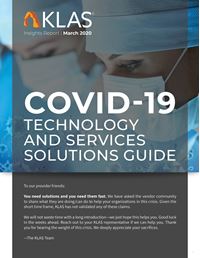As medical experts work to better understand the spread of COVID-19, they reveal that a single exposure can take up to 25 hospital staff out of commission, reducing the ability to keep up with growing hospital capacities. This challenge, along with the shortage of almost all necessary equipment, including ventilators and PPE gear, has added to the risks facing healthcare heroes on the front lines.
Contact tracing was among the list of important COVID-19 hospital preparedness tips that we shared on our blog last month, and in that time, the world has adopted a new social norm: social distancing - hoping to reduce as much contact exposure as possible, and thus to flatten the curve.
Working closely with infection prevention and quality teams all year round, we know that our hospital partners are keenly aware of how important contact tracing is in an effort to contain further spread of an outbreak. But with the incredibly fast rate at which COVID-19 has spread across countries, states, cities, and hospitals, this process is as important as the preventative measures, like hand hygiene, in the urgent need to mitigate spread and keep people safe.
Even during a more predictable and treatable hospital outbreak, contact tracing can take hundreds of hours. This laborious task involves tracking every known person who came into contact with a diagnosed person, and proactively quarantining them for proper monitoring. Most hospitals are relying on manual processes, such as electronic record chart trace backs and even staff recollection to determine which team members entered a room or came into contact with an infected person. For COVID-19, contact tracing is said to be taking up to three days per case to identify the source and all possible exposures. As experts also uncover that many cases are asymptomatic, it has only been that much more difficult to trace steps back.
Leverage Real-time, Room Level Data
SwipeSense electronic Hand Hygiene and SwipeSense Asset Tracking application allows a hospital to virtually map and track assets throughout a facility or across a health system. Room-level data about when and where an asset was used, can help drive immediate sanitation or removal of that asset.
To further help our customers tackle contact tracing, we have prototyped a contact tracing tool that can be used to quickly analyze all room-level entry/exit activity, helping to aid in determining staff who had the most extended exposure to a specific room.
KLAS COVID-19 Report Technology & Services Solution Guide
It has been amazing to see the technology community come together in a time of a crisis, innovating on ways to help healthcare professionals respond to COVID-19. KLAS has helped compile all of these solutions into a COVID-19 Technology & Services Solution Guide, in order to share trusted timely information with providers and health systems when they need it most.
Download the KLAS COVID-19 Guide
Contact us to learn more about your organization’s options, including how SwipeSense technology can help with contact tracing, hand hygiene monitoring, and locating critical equipment, like ventilators.



